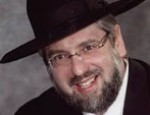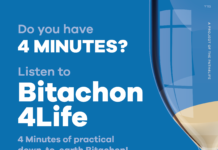 By Rabbi Pinchos Lipschutz
By Rabbi Pinchos Lipschutz
With Lag Ba’omer behind us, we know that Shavuos is rapidly approaching. The Pesach celebration of geulas Mitzrayim is fresh in our memories. The smell of the fire and the poetic strains sung on Lag Ba’omer are still flashing in our senses as we learn the parshiyos of Behar and Bechukosai this week.
All manage to fit in together around the Seder table, all sorts of sons and family members, from the chochom to the one who is a she’eino yodei’a lishol. On Lag Ba’omer, Jews of all types held hands in circles the world over, singing, “Ashreichem Yisroel.” On Shavuos, we celebrate the day 3,325 years ago when, ke’ish echod beleiv echod, all the Bnei Yisroel stood together and proclaimed, “Na’aseh venishma.”
Yet, today, we wonder: Why can’t we all get along? What happened to that achdus? Where has it gone? Why can’t it be recreated on a daily basis, everywhere, all the time?
What can be done to protect Eretz Yisroel? What can the beleaguered country, surrounded by millions of people who want to see its destruction, do to prevent its enemies from carrying out their evil designs? Scores of politicians, diplomats and generals have spent decades trying to figure out the answer to those questions, to no avail.
Many years ago, the Chazon Ish addressed the passionate resentment secular Israelis feel towards bnei yeshiva. He explained it as follows: “Hasinah sheyeish bohem, the hatred that exists within them, hu machmas nitzotz hakedushah sheyeish bohem, is due to the spark of holiness within them.”
Perhaps, by delving into this week’s parsha, we can understand the depths of the Chazon Ish’s reference to the emotional and ideological tug-of-war that has prevailed in Eretz Yisroel since the days of the early Zionists.
The pesukim at the beginning of Parshas Bechukosai provide a clear solution to the issue of peace in the land, an answer that has eluded so many politicians, diplomats and generals over the years.
The posuk (26:3) promises, “Im bechukosai teileichu – If you will walk in the path of My laws and observe the mitzvos of Hashem, then the rains will fall on time, the earth will produce its proper harvest… vishavtem lovetach be’artzechem. Venosati shalom ba’aretz, ushechavtem ve’ein machrid – and you will live confidently and in peace.”
The absence of external enemies can lead to internal friction. If the nation is not engaged in a battle for its survival against outside enemies, there is a danger that its citizens will battle each other. The Ramban (ibid.) posits that this is why after promising vishavtem lovetach, the posuk promises shalom, peace. Hashem is promising the Jewish people that if they behave properly, they will not only be safe from attacks across their borders, but they will also not have to worry about internecine battles. There will be peace, complete and total.
The very spot where heaven and earth meet is also the epicenter of the perpetual struggle between them. If the Bnei Yisroel observe the Torah, they will merit peace in their land. They will be spared enemies on their borders and harmony will reign in the country. If they are lacking in their observance of the Torah, their enemies who seek to engulf them will be empowered and there will be discord between brothers.
The posuk in the Tochachah (26:15) declares, “Ve’im es mishpotai tigal nafshechem levilti asos es kol mitzvosai lehafrichem es brisi.” The Toras Kohanim explains that the posuk is stating that someone who doesn’t learn Torah and perform mitzvos will eventually develop into one who despises talmidei chachomim and those who properly observe the mitzvos. This is the meaning of the posuk: Initially, the scoffer becomes disgusted by Hashem’s mishpotim and says, “Es mishpotai tigal nafshechem.” He then stops other people from doing mitzvos – “levilti asos” – until, eventually, that person becomes a total kofer – “lehafrichem es brisi.”
In midst of the brachos contained in the parsha, the posuk says (26:11), “Venosati Mishkoni besochechem, velo sigal nafshi es’chem – I will place my Mishkon amongst you and My Soul will not purge itself of you.” The Alter of Novardok wondered about the nature of this brochah and the implications of Hashem’s guarantee.
He answered that according to the natural order of things, the spiritual nefesh, which is on a higher level of kedushah, should despise being in a body, which is lowly and physical. The only reason that the nefesh is not disgusted by its place in the guf is because of the special brochah depicted in this posuk. The soul of a Jew can acquiesce to its placement in the physical body, because when the guf fulfills the wishes of Hashem, it raises its status and can equal that of the neshomah.
It is this synthesis that allows man to function, experiencing the desires of his guf and the longing of his neshomah and learning to work with this duality.
The Ponovezher rosh yeshiva, Rav Dovid Povarsky in Yishmiru Daas amplifies this concept. He explains that harmony can only be achieved by observing mitzvos and fulfilling the ratzon Hashem, because then the guf and neshomah work together. Since the neshomah will never lower itself to the level of the guf, the only way the duality with which man was created can be achieved is if the guf raises itself beyond the physical, to a higher plane.
He explains further that the relationship between people who fulfill the ratzon Hashem and those who ignore it parallels this association.
This, the rosh yeshiva says, is the reason for the intense dislike displayed by chilonim towards chareidim. According to teva, there is a dichotomy between the guf and the neshomah, but Hashem created man with the ability to turn his guf into neshomah. Thus, the neshomah doesn’t hate the guf, because it knows thatthe guf can raise itself to its level.
However, the guf despises the neshomah, for the neshomah never lowers its level to that of the guf. Therefore, those who have not raised their guf to the level of neshomah revert to the natural hatred of the guf toward the neshomah and anything that resembles it.
People who choose to focus their lives and choices on the world of neshomah are despised by those who choose guf; which is only natural. But the people who have chosen a life of guf aren’t disliked by the others, for the world of neshomah remains optimistic that, one day, those who choose guf will also adopt the lifestyle of the neshomah.
In Eretz Yisroel, we are witness to that constant tug of war between guf and neshomah. Unlike in other countries, no citizen there is indifferent, content to live and let live.
The chareidim burn with a zeal to “fill the land with the knowledge of Hashem like water covers the ocean floor,” improving their own levels of the sublime neshomah and attempting to bring that holiness to their brothers who have been robbed of it by the disciples of Achad Ha’am and Ben Yehudah.
Meanwhile, as those who despise the mishpotim of the Torah remain obsessed in their desire to carve out a secular state unencumbered by age-old laws, passionate Yidden don’t rest from trying to bring wayward souls back to Torah and achieving harmony between the neshomah and the guf of the nation.
It is in the passion of those who spread Torah and kedushah and engage in kiruv rechokim that we find comfort in times such as these.
This week marks the fifteenth yahrtzeit of one of the most passionate Jewish leaders in recent memory, Rabbi Moshe Sherer.
As he related decades later, Rabbi Sherer owed his career to the passion of someone else. He recalled a period when the Agudah was suffering severe financial hardship and a general apathy in the ranks, and it seemed that asserting Orthodoxy as a dominant force in American Jewish life was too daunting a task for him to fill. He wrote a letter of resignation and sent it to the head of the Moetzes Gedolei HaTorah, Rav Aharon Kotler.
Upon receiving the letter, Rav Aharon asked Rabbi Sherer to immediately come to his home. As soon as he entered the rosh yeshiva’s apartment, Rabbi Sherer was confronted by the rebbetzin.
“Rabbi Sherer,” exclaimed Rebbetzin Chana Perel Kotler, “how can you consider such a thing?” She began to cry. “How can you do this to my husband? How can you do this to my father, Rav Isser Zalman, who sacrificed so much for Agudas Yisroel? How can you do this to Klal Yisroel?” She kept weeping as Rabbi Sherer remained silent.
Several years after having successfully built the Agudah, Rabbi Sherer stood at the podium and reflected: “It was those tears of the rebbetzin, her emotion and deep tza’ar, that convinced me to stop and take a step back, giving it another try.”
Owing his career to a rebbetzin’s passionate tears, he injected a passion for da’as Torah and unapologetic pride in authentic Yiddishkeit into many hearts.
On one of his many trips to Eretz Yisroel, Rabbi Sherer walked into a hotel lobby and encountered an elderly gentleman he thought he recognized. The fellow, who was sipping a drink bare-headed, had been his Talmud Torah rebbi many years earlier.
Rabbi Sherer introduced himself and said, “I have to thank you for something. Seeing you sitting here answers a question that gnawed at me for many years. I often wondered why I didn’t grow in learning when I was a young student in your third grade class. I was perturbed by why davka in the third grade my natural urge to succeed in learning wasn’t realized. It bothered me that the year was so uninspiring for me. I never understood why it was that way.
“Now,” he continued, “as I see you sitting here, without a yarmulka, I realize that even back then, when you taught in the Talmud Torah, you didn’t really believe the fundamentals of emunah that you were teaching. Therefore, you weren’t enthusiastic about what you were teaching us children. If the teacher isn’t passionate, the students will never learn. So I thank you,” concluded Rabbi Sherer, “for answering my question.”
It answers another question as well.
How is it that legions of rabbeim and moros, who usually struggle to make ends meet and rarely get to go away during the school year, expend so much effort to take off a weekend, making arrangements for their children and driving for hours so that they can attend the Torah Umesorah convention this Shabbos?
The answer is that they are passionate individuals, people of the soul, and they have thus been selected by the Ribbono Shel Olam to kindle other souls. It is important to them, so they find a way.
The mechanchim our generation is blessed with, and the devoted baalei batim who support our chinuch system, raise the dor, elevating the collective guf to the level of neshomah. Envisioning each child as a youngster blessed with unlimited potential, they labor to transform each one into a neshomah filled with endless light, able to conquer all and succeed.
The great rejoicing and dancing on Lag Ba’omer in Meron and all around the world were expressions of the neshomah’s yearning, an appreciation of our great rebbi, Rabi Shimon bar Yochai, and the heights he reached. He revealed the depth and potential of each Yid, assuring us that wherever he is, a Jew can always raise himself ever higher.
The words selected as Rabi Shimon’s enduring legacy, emblazoned on the famous entranceway in Meron, quote his teaching, “Ki lo sishochach mipi zaro,” representing his assurance that Hashem’s children will never forget the Torah, despite all that will befall them. The final letters of the words spell Yochai, a hint at how they are bound up with the essence of the one who said them: Ki lo sishachach mipi zaro.
This past Motzoei Shabbos, as I stood among tens of thousands at the bais medrash in Kiryas Yoel, where the Satmar Rebbe presided over a magnificent hadlakah and inspiring tish, I was thinking that the glowing fire in the center, with its smoke rising heavenward, surrounded by tens of thousands of individuals overtaken by song and prayer, was a potent symbol of the burning neshamos all around us, Yidden everywhere seeking to raise the levels of their guf to that of their neshomah, a reminder of the enduring truth of retzoneinu la’asos retzoncha.
Shortly after the Second World War, a group of survivors gathered at the tish of the Klausenberger Rebbe. The pain of loss and devastation was evident on their faces, as they struggled to rebuild and rise above the loneliness and sorrow. It was Shabbos parshas Bechukosai. The Rebbe discussed the juxtaposition of the parsha of eirchin, which addresses the valuation of a person who pledges his worth to the Bais Hamikdosh, and the Tochachah, the horrific account of that which will befall Klal Yisroel if the nation disregards the Torah.
“The full erech, value, of a Yid,” the Rebbe explained, “can only be appreciated after he experiences the Tochachah. After encountering suffering of this magnitude, a Yid who stands tall and strong is worth so much…”
His message that Shabbos to the Yidden around the table who had lost everything they owned or knew was a physical loss. It was a plaintive cry that they should let their neshamos guide them, uplift them, and lead them to happier and better times.
As the fame of the Chofetz Chaim grew, people flocked to him, asking for brachos. Many times he would respond with advice. “Why did you come to me for brachos?” he would say. “I am just a simple human being. Real brachos can be obtained by following the pesukim in Parshas Bechukosai, which proclaim that all the blessings of the world will flow to those who observe Hashem’s path – ‘Im bechukosai teileichu.’ The holy Torah, whose every word is pure and true, guarantees brachos for shemiras hamitzvos. If it is blessings you seek, you would be well advised to spend your time advancing your shemiras hamitzvos and forgetting about me.”
May the words of this parsha, with its promises of brachos and yeshuos, fill all Jews everywhere and the entire world with light, blessings, peace and the ultimate brochah.
{Matzav.com Newscenter}












rabbi lipschutz is #1 writer i love reading his columns hes just streight up AWESOME
Fact Check:
“Chilonim hate Chareidim” – FALSE. This general broad-brush accusation and oft tossed about refrain has grown stale already.
Actually, Chilonim (and many chareidim too) are just tired of fully supporting an entire segment of the population who refuse to work as a matter of principle.
Especially, when those they are supporting show no gratitude, zero respect for the soldiers defending them, despise the institutions that support them and oddly enough, accuse those who are fully supporting them – of hatred!
Chilonim hate chareidim? I’m not sure.
#2 i think this article explains clearly that chilonim hate chareidim and why you are actuslly arguing on the chazon ish and a mifoorisha gemra that says sinas am haaretz li’talmidei chachomim
????? ???
#2 In agreement.
great article rabbi, as alllllllllllllllllllllllllwaaaaaaaaaaaaaays
I look forward to R Lipshutz’s article every week, he is a phenomenal gifted writer, combining his breadth of knowledge in Torah, his relationship with gedolim etc, with tremendous creative ability to articulate his message with such skill. However this week I find myself not in agreement with aspects of his message. While some of the institutional antipathy of the secular element can certainly be understood with the insight he relates from the Gedolai Olam he mentions, I think it also is fueled by some of the positions and actions of the Chareidi community, both individually and as a klal.
I agree with “Torahis1” – I dont think chilonim hate chareidim at all. I think most Jews, across the spectrum, relate to ther Jews instinctively as brothers. Individuals certainly act otherwise, sometimes loudly and publicly, but mostly I think it is inaccurate to label it as hate. As anybody with children can attest, sometimes when brothers disagree on issues they feel passionately about, they fight. But they are still brothers.
How opportunistic, why am I not surprised? Which way will the wind blow next week?
#2,et al,
Fact Check:
Chilonim hate Chareidim
(I likely have more connection to chilonim than any of you )
The avg. Chiloni ranges from respect for chareidim to plain wonder how he is supposed to feel for them.
However ,he is immersed in a culture that eggs him on to disdain and hate them
However ,he is immersed in a culture that eggs him on to disdain and hate them
thats right in our culture the neshamos is first and foremost and a baal guf cant stand the dominance of the neshama. he disdains it
sinaas am haaretz litalmidei chachamim va-a-nash-che-nu ke’chamor